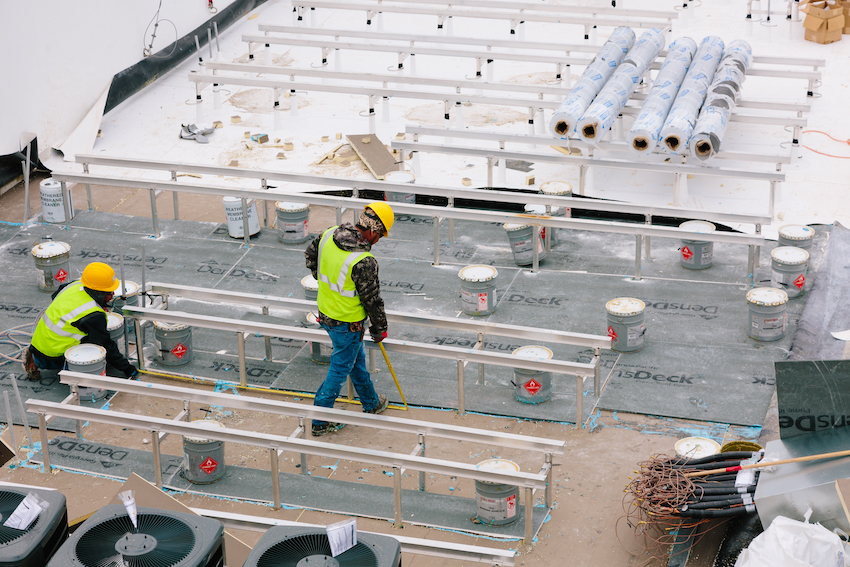Why Use Cover Boards in North America?
Roofing systems to protect against the most common threats
Sponsored by Georgia-Pacific Building Products
There is no audio associated with this presentation.
Cover board can be a strategically important addition to roofing systems to help protect against the most common threats to flat or low-sloped roofs. The risk of damage from wind, water intrusion, fire, foot traffic and the potential of puncture can all be mitigated using cover boards as a protective layer above the insulation. In addition, the inherent nature of cover board can also offer better acoustic performance and allow for additional support for photovoltaic energy generation systems as well as vegetative roofs. This presentation will discuss what cover board is and list best practices for installing cover board in roof assemblies as well as identify what factors affect roof life span and explain how cover board can impact the performance of the building.

Photo Courtesy of Georgia-Pacific Gypsum
LEARNING OBJECTIVES
- Describe what cover board is and list best practices for installing cover board in roof assemblies.
- Identify what factors affect roof life span and these factors can impact the health and safety of occupants.
- List the key approvals to seek with cover board to ensure comfort, safety and welfare of occupants.
- Describe how cover board can impact the performance of the building to improve the durability, indoor air quality, and comfort of the building.
ALL CREDITS
As an IACET Accredited Provider, BNP Media offers IACET CEUs for its learning events that comply with the ANSI/IACET Continuing Education and Training Standard.
This course is approved as a Structured Course
This course can be self-reported to the AANB, as per their CE Guidelines
Approved for structured learning
This course can be self-reported for Learning Units to the Architectural Institute of British Columbia
Approved for Core Learning
This course can be self-reported to the NLAA
Course may qualify for Learning Hours with NWTAA
Course eligible for OAA Learning Hours
This course is approved as a core course
Georgia-Pacific Building Products has a legacy of creating strong, durable, sustainable building materials from exterior sheathing products to drywall in walls and ceilings to industry leading roof products and supporting products from lumber to subfloors to fire doors. We help members of the building community build quality commercial and residential construction projects all over the world. GP Building Products is the largest producer of structural wood panels (plywood and OSB) in North America and is a leading producer of gypsum building products, lumber and composite panels.
We support commercial and residential architects, designers, building material dealers, contractors and builders with tools, education and supporting resources that help the building community advance their knowledge, hone their craft, and make the best product decisions for their projects.
Originally published in Architectural Record
Subscribe to Architectural Record
Originally published in May 2020









